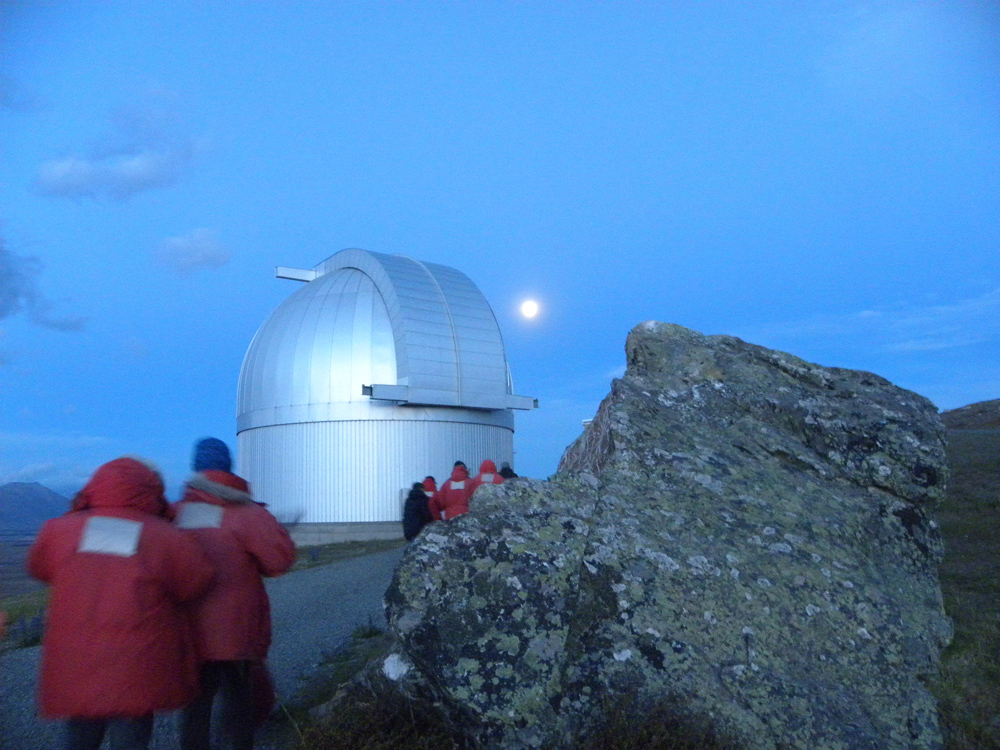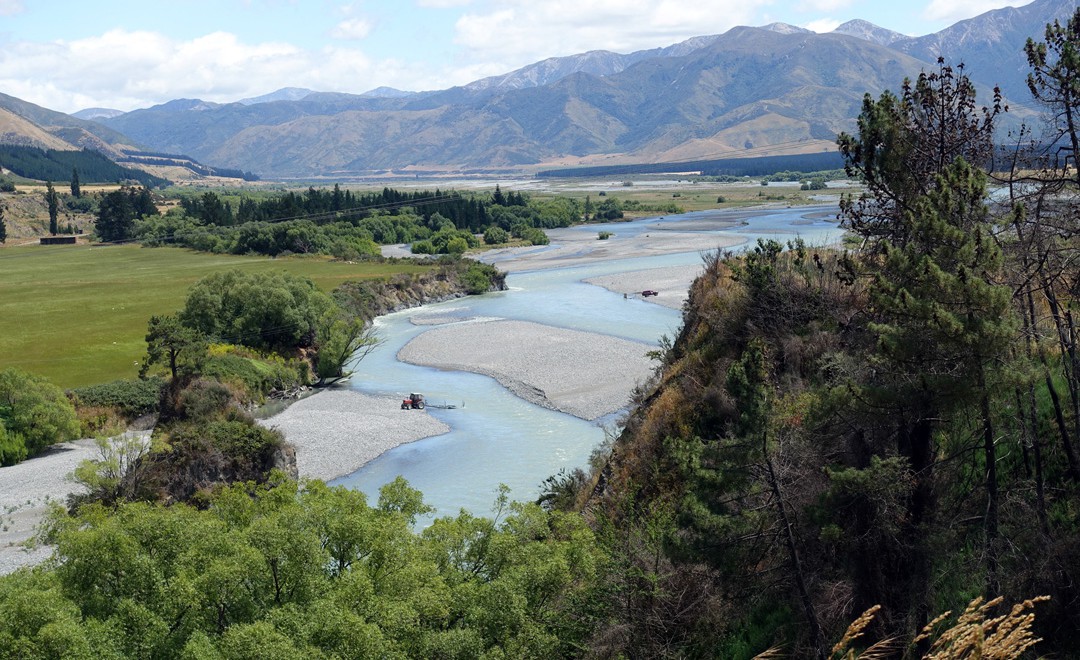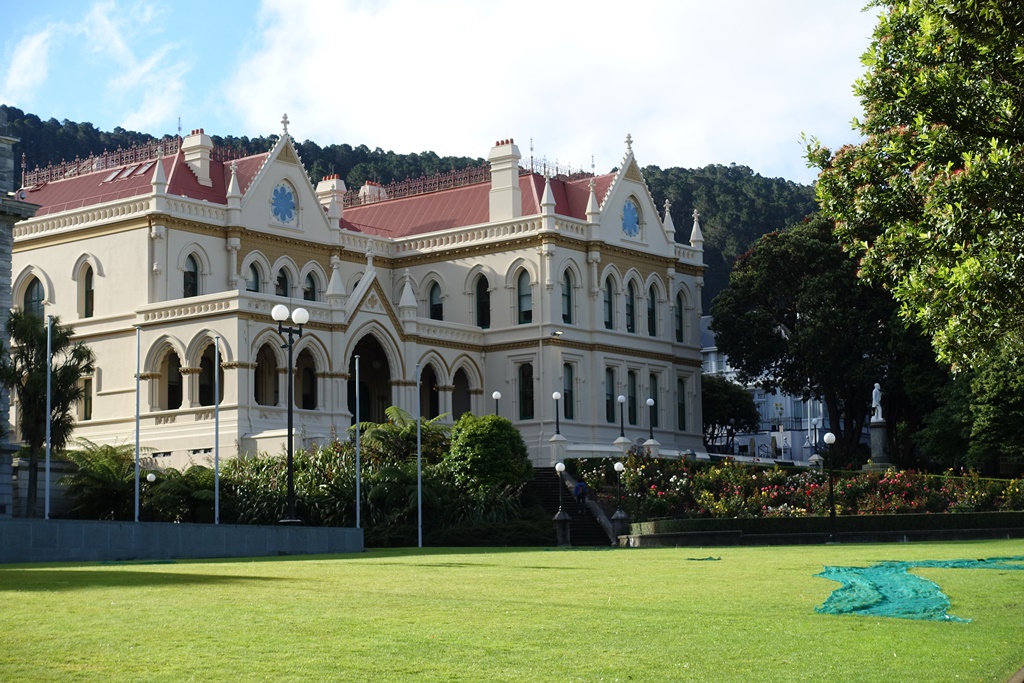
While at Lake Tekapo in the center of New Zealand’s South Island, Bill and I drove up to the Astro Cafe on Mount John for good food and spectacular views of the surrounding Southern Alps and lakes of MacKenzie Southern Basin Flats, but the wind at the top was blowing about 60 mph.
We were looking forward to the Earth and Sky night tour to see one of the largest telescopes in the world. No other observatory is situated so far South on Earth. It would be exciting to learn from the guide about the stars and constellations of the Southern Hemisphere, which include ones we cannot see above the Equator.
The location for the telescope on Mt John was chosen because it is 1,037 meters (about 3,100 feet) high above any artificial lights and has the darkest atmosphere of any near the bottom of the world. The nearly pollution-free air provides more clear nights than any other location, and weather is mostly good for viewing, although wind is always a factor. At this location scientists and students from Canterbury University search the Universe as far away as over 11 billion light years in distance. At this observatory 44 planets, previously never seen, have been discovered and verified. The workers are on continual search for other life in the Universe. Many computers constantly collect the data and images from the telescope and help interpret and catalogue it for the world’s scientists. The 9:30 P.M. and 2 A.M. most nights The Earth and Sky Tour is scheduled for two hours, the first half hour at the observatory learning about the giant telescope and the rest for star-gazing through other telescopes.
The wind speed was hovering around 76-78 kilometers per hour, so we could only hope for the best, since the mountain must be evacuated if wind speeds reach 80 kph. The tour offered coats to anyone who needed them. On the English-speaking tour there are no translations, as tours in other languages are offered at other times. The guides told us to hold hands with our partners as the wind is ferocious. Bill and I connected and we all hastened in the near darkness with the others into the shelter of the round building, which houses the largest telescope in the Southern Hemisphere. Our guide, Carol, an advanced student from Canterbury University, was very experienced and knowledgeable. She told us all about the giant telescope, which reached almost to the domed ceiling that opens to varying degrees for the telescope to search the Universe. The telescope is on special legs which will not stay rigidly attached to the floor because during one of the many earthquakes in this area it would shake to destruction. Instead it is perched in such a way as to move around within the close confines of the room. This movement prevents it from being ruined when the earth shakes.
Although the location chosen for this Observatory is on the Alpine Fault, which is overdue to cause destruction at any time, it was carefully selected for its darkness because the atmosphere at Mt. John is high above the closest lights from the little Lake Tekapo town. Here the atmosphere is clear of pollution and stray lights and has more clear nights than any other place in New Zealand. We were each given small red lights to see our way around the mountain as we moved as a group and were given strict instructions of NO white lights (camera flash, flashlights, cell phones, etc.) Any tiny ray of extraneous white lights could ruin what the scientists are observing on the computers connected to the gigantic telescopes as they work from control rooms in several buildings which dot this mountain. Even the bus for the tours must use only the smallest light for navigation.
At this Observatory, since the 1980’s, when the camera on the telescope was the largest in the world with over 83 pixels, the scientists and students have discovered and confirmed 44 previously undiscovered planets. Each night when the ceiling is opened for the observations they first take a photo of the existing “noise,” which is the dust particles, clouds, or moonlight which could distort the faraway observations, and then the noise can be filtered away from each scientific photo collected to be sure observations and conclusions are accurate.
We were learning so very much and went into the control room to see the large computer system collecting the photos. The wind was louder and louder outside and then our guide got the dreaded call, Evacuate the mountain immediately because winds had reached 80 kph and people could be blown off the mountain. This rule is strict. We were all disappointed but Carol explained that one night she had been stranded with a large group of tourists on the mountain all night because the wind reached over 200 kilometers per hour. The buildings are built to withstand 300 kilometers per hour. Everyone was offered rain-checks or refunds.
Day tours are nominal since there is no star-gazing. Tourists never get to look through the big telescope, but the star gazing at night is through more conventional telescopes with scientists there to explain and teach about the Universe, stars, constellations, and planets. The 2 A.M. tour is the best time for those who want to stay up late and really see stars and sometimes the Aurora, whose natural colored light array is beautiful when conditions are right. Earth and Sky Tour should be high on your list if you are in the area of Lake Tekapo, just three hours’ drive from either Queenstown or Christchurch. Remember full moon nights make the stars much fainter, so if possible plan to be there on darker nights when the moon is in a smaller phase.
About the Author:
Bonnie Neely, a professional journalist for over 30 years, has worked extensively in educational television in which she has been project coordinator, researcher, and scriptwriter. She has also been a columnist for various newspapers and magazines as well as a producer/scriptwriter for the Discovery Channel. Furthermore Bonnie is one of the “Top Book Reviewers” for Amazon.com. She founded Real Travel Adventures and built it into a leading travel blog.










